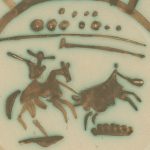Behind the Artist: Rembrandt van Rijn
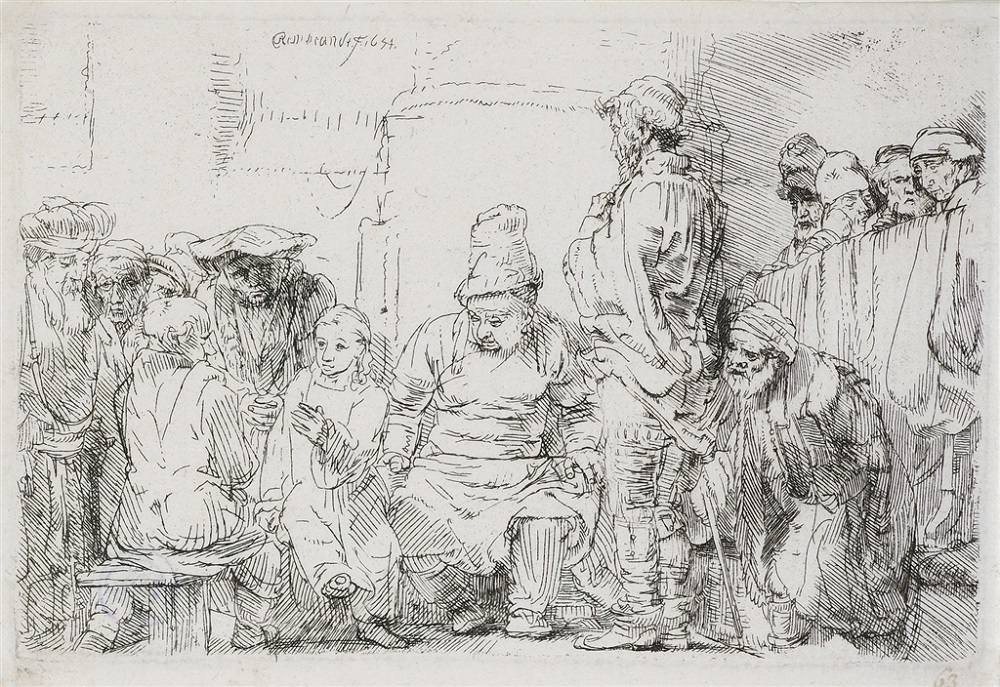
“Christ Seated Disputing with the Doctors” (1658), Rembrandt van Rijn
Nearly 400 years ago, Dutch visionary Rembrandt van Rijn famously wrote: “Choose only one master—nature.”
True to his muse, Rembrandt’s magnitude continues to puzzle those in its presence. There are arguably few other artists who embody a talent so vast and incomprehensible, earthly, yet simultaneously immortal.
As a tribute to his significance, the notable Spanish court painter Francisco Goya would later revise Rembrandt’s statement to say: “I have had three masters—nature, [Diego] Velázquez, and Rembrandt.”
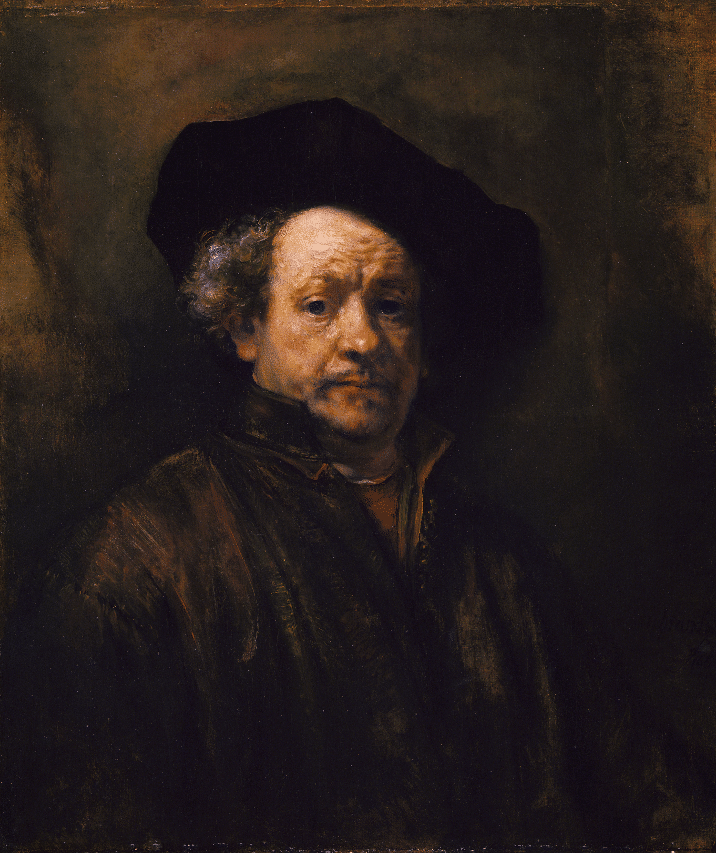
“Self-Portrait” (1660), Rembrandt van Rijn. Image Public Domain. Courtesy of Wikimedia Commons.
Born on July 15, 1606 in the Dutch Republic of Leiden, Rembrandt tenaciously developed his artistic talent at an early age. Working between the two foremost intellectual centers of the Baroque Age—Leiden and Amsterdam—Rembrandt opened a studio and began accepting students before the age of 22. By 1631, Rembrandt had officially settled in Amsterdam after boasting rapid success from the court of The Hague and Prince Frederik Hendrik.
Rembrandt’s success was infectious, if not unstoppable. From leaders of the Dutch municipality to the scholastic elite, wealthy patrons eagerly commissioned portraits from the real-time celebrity, coveting the imperfect nobility he endowed in his work. As a subject of study, the artist’s portraits are viewed as a manifestation of the human condition—brutal, triumphant, truthful, and transcendent.
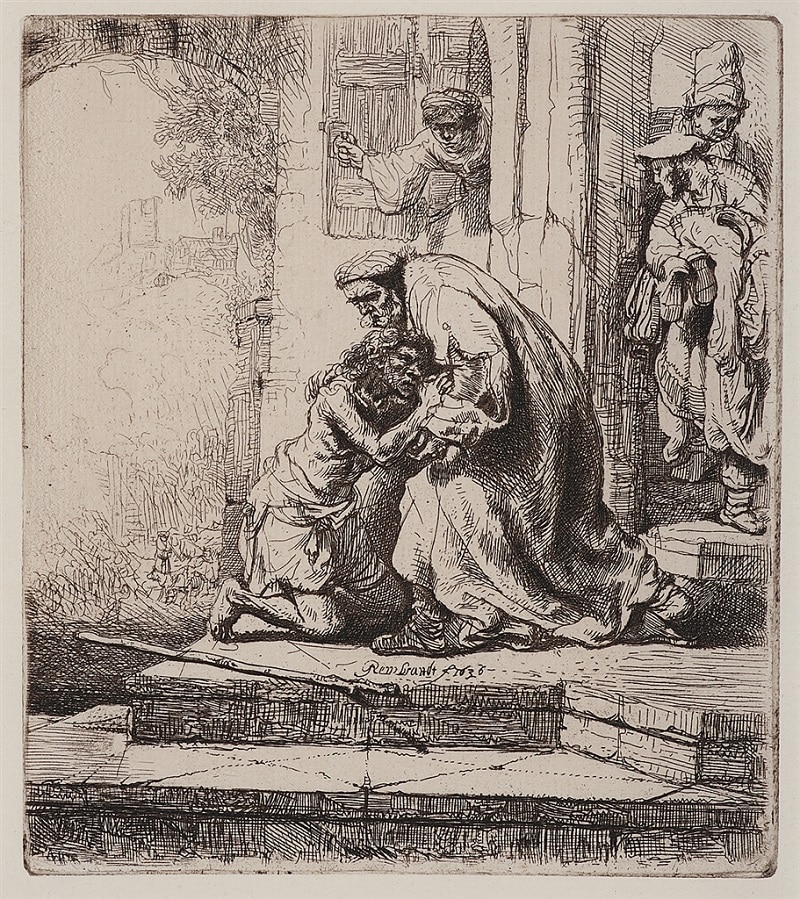
“Return of the Prodigal Son” (1636), Rembrandt van Rijn
Rembrandt’s legacy is grounded in his deeply technical and empathetic understanding of representation, encouraging a prolific and versatile career across many media. As an embodiment of the sorrow he worked to portray, Rembrandt’s unyielding rise to success was met with an equally merciless downfall.
Father of Printmaking
Though Rembrandt is commonly appreciated for his dexterity as a painter, he is widely considered to be one of history’s most innovative and influential printmakers. The artist created more than 300 etchings and drypoints between 1626 and 1660 before selling his printing press due to financial hardship.
It is documented that the versatile master was thoroughly involved in the entire printmaking process, unlike many of his contemporaries. To Rembrandt, etching was the pinnacle of free expression; he is said to have carried a copper plate and burin as most artists would a sketchbook.
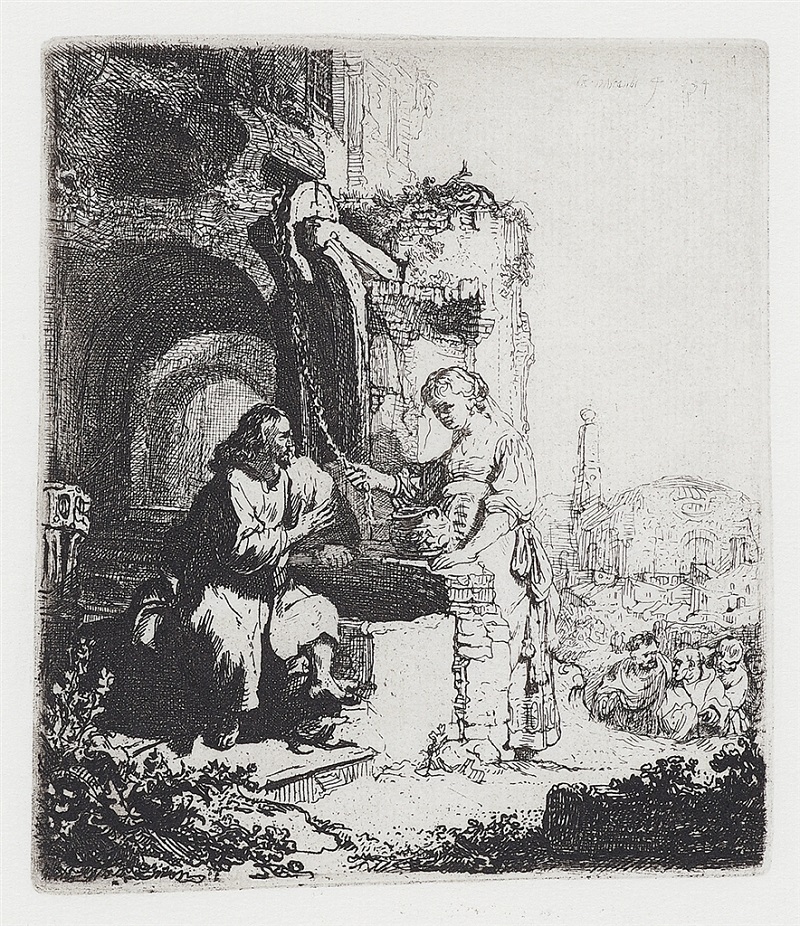
“Christ and the Woman of Samaria: Among Ruins” (1634), Rembrandt van Rijn
Rembrandt’s career as an etcher surpasses his work as a painter in regard to creative fluency, emotional range, and emphasis on the contrast between light and dark, or “chiaroscuro.” Biblical scenes, self-portraits, and landscapes are the most common subjects in the artist’s body of printed work.
Rembrandt’s contributions to the medium of etching inspired the printmaking masters of later generations: Francisco Goya, Marc Chagall, James Abbott McNeill Whistler, and Pablo Picasso.
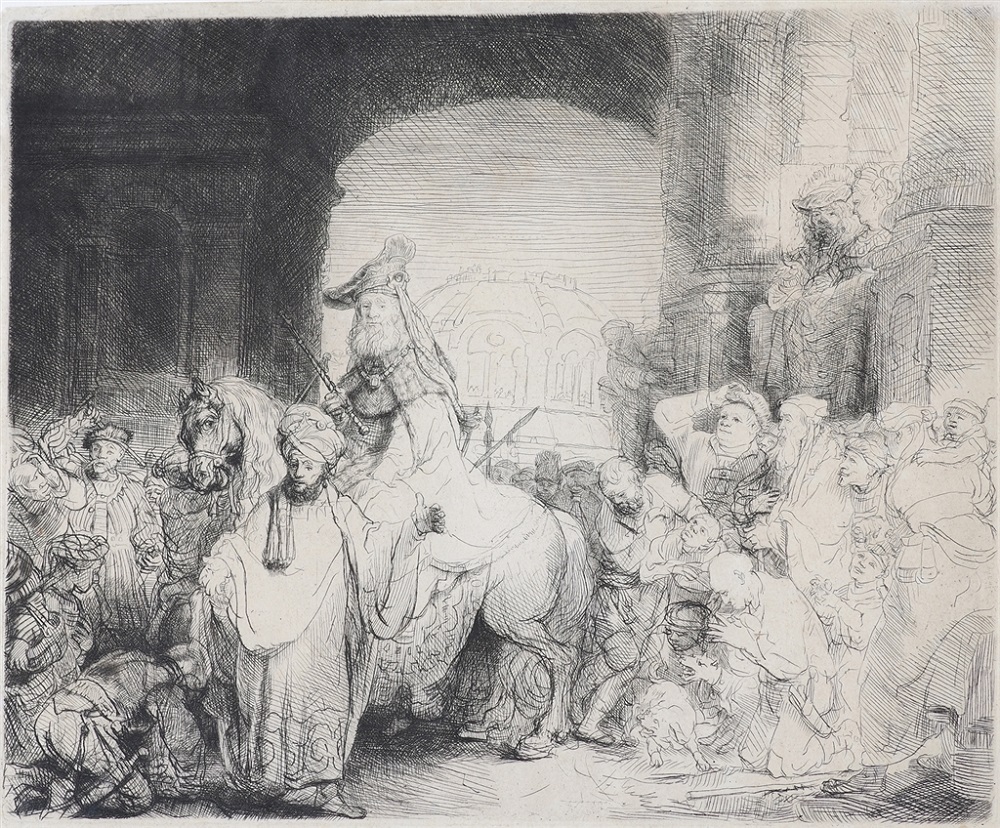
“Triumph of Mordecai” (1641), Rembrandt van Rijn
Span of Work and Museum Exhibitions
In addition to the 300 etchings, engravings, and drypoints Rembrandt created during his lifetime, his oeuvre is said to include around 300 paintings and 2,000 drawings.
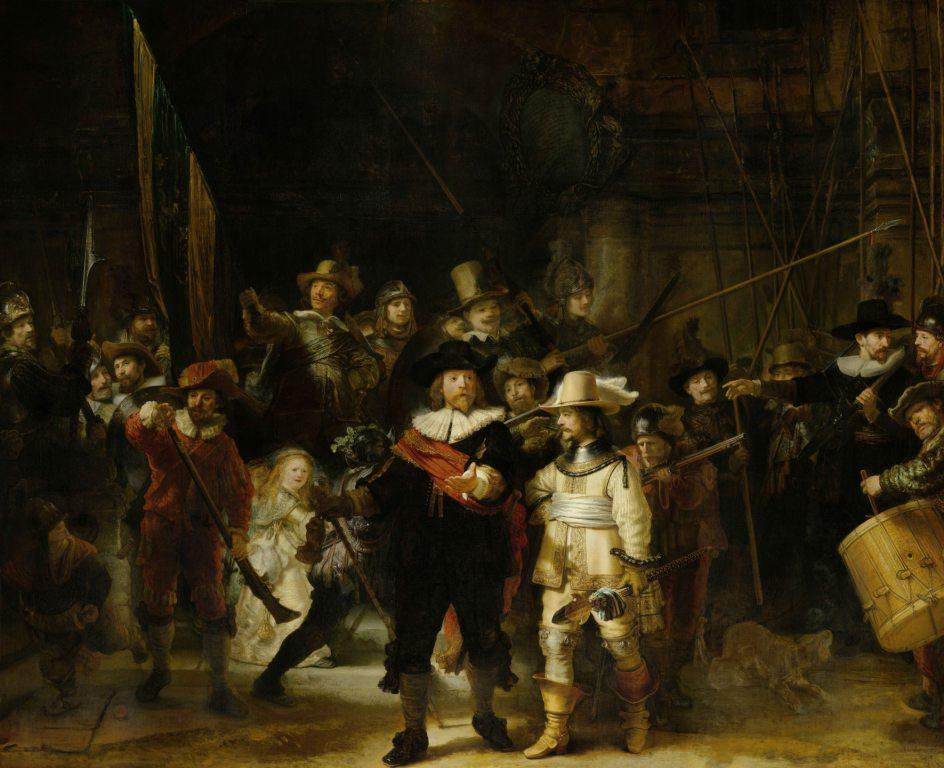
“The Night Watch” (1642), Rembrandt van Rijn. Image Public Domain. Courtesy of Wikimedia Commons.
Today, artworks by Rembrandt are included in many of the world’s most prestigious museums, including the Rijksmuseum, the Louvre, the National Gallery, the State Hermitage Museum, the Frick Collection, and the Metropolitan Museum of Art, among countless other historical venues.
Spiraling Tragedy and Death
In 1634, Rembrandt married Saskia van Uylenburgh. While their marriage lasted only eight years, the partnership is woefully regarded as one of the great, tragic romances of art history. Of the couple’s four children—Rumbartus, Cornelia, Cornelia, and Titus—only their youngest would live to adulthood.
Shortly after giving birth to Titus, Saskia passed away in 1642 from what was most likely tuberculosis. Testifying his sorrow, Rembrandt drew Saskia before her death. Today, these drawings are regarded by some to be the artist’s most poignant and moving works. In the late 1640s, Rembrandt had a relationship with Hendrickje Stoffels, whom he would also outlive.
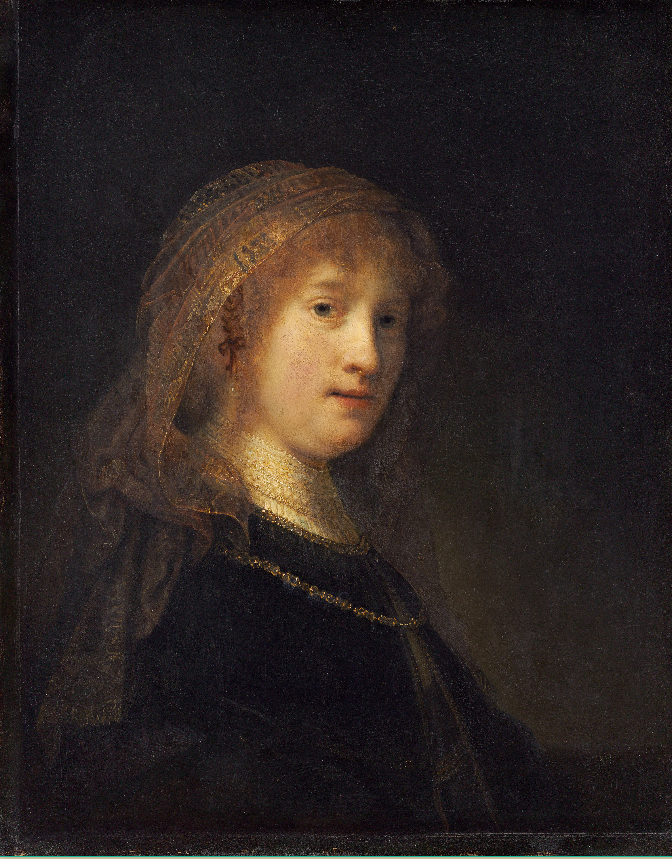
“Saskia van Uylenburgh, the Wife of the Artist” (c. 1635), Rembrandt van Rijn. Image Public Domain. Courtesy of Wikimedia Commons.
Like many artists in the Renaissance and Baroque era, Rembrandt was an avid art collector and connoisseur of historic objects. Rembrandt’s ostentatious lifestyle and penchant to amass a great collection of his own, however, forced him to declare bankruptcy in 1656. Though the artist continued to fulfill commissions for Amsterdam’s elite, the frequency and reception of his work began to plummet.
In 1661, the Amsterdam City Council commissioned Rembrandt to paint “The Conspiracy of Claudius Civilis.” After its completion, the painting was rejected and scorned as a crude debasement of Roman history. The artist was forced to cut away at the masterpiece in the hopes that the central portion could be sold.
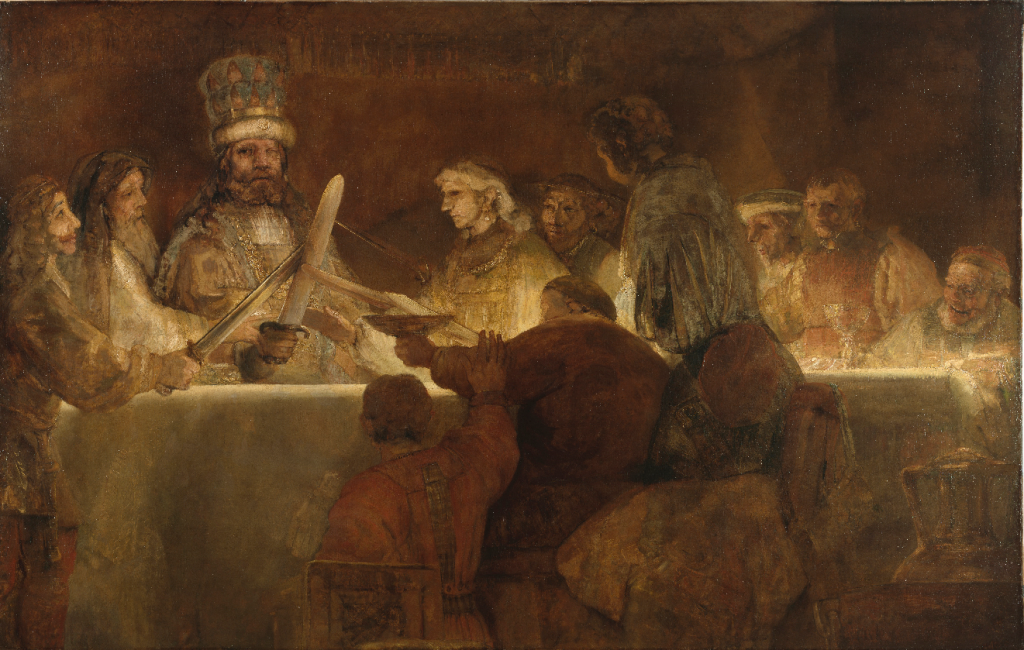
Remaining portion of “The Conspiracy of Claudius Civilis” (1661), Rembrandt van Rijn. Image Public Domain. Courtesy of Wikimedia Commons.
Rembrandt died in 1669. He was buried in an unmarked grave which was later destroyed due to his status as a poor man. However, despite the circumstances at the end of his life, the name “Rembrandt” would eventually be remembered as one of the most influential and renowned artists in all of recorded history.
To add a limited-edition masterpiece by Rembrandt van Rijn to your collection, register for our exciting weekly online auction or contact one of our gallery consultants at (800) 521-9654 ext. 4 during business hours or sa***@*************ry.com.





